Showing Spotlights 1017 - 1024 of 2786 in category All (newest first):
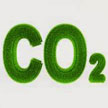 Putting some of the rising amounts of carbon dioxide in the atmosphere to good use again, researchers are looking for ways to convert atmospheric CO2 emissions into industrially relevant, valuable chemicals and fuels; ideally powered by clean, renewable energy sources to make the whole process carbon-negative or at least carbon-neutral, i.e. by using at least - if not more - CO2 than is created in the process. New work demonstrates that current, state-of-the-art renewable energy sources can efficiently power large-scale CO2 conversion systems.
Putting some of the rising amounts of carbon dioxide in the atmosphere to good use again, researchers are looking for ways to convert atmospheric CO2 emissions into industrially relevant, valuable chemicals and fuels; ideally powered by clean, renewable energy sources to make the whole process carbon-negative or at least carbon-neutral, i.e. by using at least - if not more - CO2 than is created in the process. New work demonstrates that current, state-of-the-art renewable energy sources can efficiently power large-scale CO2 conversion systems.
Jul 20th, 2015
 Researchers have demonstrated a novel, low-cost substrate processing procedure to achieve rapid, efficient synthesis of millimeter-sized single crystal graphene. One of the greatest challenges in commercializing graphene is how to produce high quality material, on an industrial scale, at low cost, and in a reproducible manner. The quality of graphene plays a crucial role as the presence of defects, impurities, domain boundaries, multiple domains, structural disorders, or wrinkles in the graphene sheet can have undesired or unexpected effects on its electronic and optical properties.
Researchers have demonstrated a novel, low-cost substrate processing procedure to achieve rapid, efficient synthesis of millimeter-sized single crystal graphene. One of the greatest challenges in commercializing graphene is how to produce high quality material, on an industrial scale, at low cost, and in a reproducible manner. The quality of graphene plays a crucial role as the presence of defects, impurities, domain boundaries, multiple domains, structural disorders, or wrinkles in the graphene sheet can have undesired or unexpected effects on its electronic and optical properties.
Jul 15th, 2015
 Among others, a significant area for nanopaper applications are sensors. Paper-based sensors promise to be simple, portable, disposable, low power-consuming, and inexpensive sensor devices that will find ubiquitous use in medicine, detecting explosives, toxic substances, and environmental studies. New work describes various nanopaper-based nanocomposites that exhibit plasmonic or photoluminescent properties that can be modulated using different reagents. These can be used for simple, disposable and versatile sensing platforms.
Among others, a significant area for nanopaper applications are sensors. Paper-based sensors promise to be simple, portable, disposable, low power-consuming, and inexpensive sensor devices that will find ubiquitous use in medicine, detecting explosives, toxic substances, and environmental studies. New work describes various nanopaper-based nanocomposites that exhibit plasmonic or photoluminescent properties that can be modulated using different reagents. These can be used for simple, disposable and versatile sensing platforms.
Jul 14th, 2015
 An international research team has designed and demonstrated novel self-powered human-interactive transparent nanopaper systems, utilizing transparent nanopaper as base material. This nanopaper system is based on an electrostatic induction mechanism and a dielectric material. That makes them self-powered, i.e. able to operate without the need for external power. The basic working mechanisms of the resulting devices are electrostatic induction effects caused by the retaining charges.
An international research team has designed and demonstrated novel self-powered human-interactive transparent nanopaper systems, utilizing transparent nanopaper as base material. This nanopaper system is based on an electrostatic induction mechanism and a dielectric material. That makes them self-powered, i.e. able to operate without the need for external power. The basic working mechanisms of the resulting devices are electrostatic induction effects caused by the retaining charges.
Jul 13th, 2015
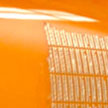 Researchers have developed a simple double-transfer printing technique that allows them to integrate high performing electronic devices - featuring state-of-the-art, non-planar, sub-20nm FinFET devices - fabricated on novel flexible thin silicon sheets with several kinds of materials exhibiting complex, asymmetric surfaces including textile, paper, wood, stone, and vinyl. This process utilizes soft materials to integrate nonplanar FinFET and planar traditional MOSFET devices onto various wavy, curvilinear, irregular, or asymmetric surfaces.
Researchers have developed a simple double-transfer printing technique that allows them to integrate high performing electronic devices - featuring state-of-the-art, non-planar, sub-20nm FinFET devices - fabricated on novel flexible thin silicon sheets with several kinds of materials exhibiting complex, asymmetric surfaces including textile, paper, wood, stone, and vinyl. This process utilizes soft materials to integrate nonplanar FinFET and planar traditional MOSFET devices onto various wavy, curvilinear, irregular, or asymmetric surfaces.
Jul 9th, 2015
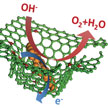 Researchers have been looking to design catalyst materials that can significantly enhance the performance of oxygen evolution reaction (OER), a key eletrode reaction that is an enabling process for many energy storage options such as direct-solar and electricity-driven water splitting and rechargeable metal-air batteries. However, OER suffers from sluggish kinetics - but a novel material inspired by the pomegranate might change that.
Researchers have been looking to design catalyst materials that can significantly enhance the performance of oxygen evolution reaction (OER), a key eletrode reaction that is an enabling process for many energy storage options such as direct-solar and electricity-driven water splitting and rechargeable metal-air batteries. However, OER suffers from sluggish kinetics - but a novel material inspired by the pomegranate might change that.
Jul 2nd, 2015
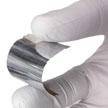 Researchers have demonstrated the fabrication flexible ferroelectric random access memory (FeRAM) devices using state-of-the-art CMOS processes (sputtering, photolithography, and reactive ion etching). This bridges the existing gap between rigid inflexible semiconductor high performance, integration density, yield, and reliable electronics and highly flexible polymer/hybrid materials based relatively low performance electronics. This enables combining the best of two worlds to obtain flexible high performance electronics.
Researchers have demonstrated the fabrication flexible ferroelectric random access memory (FeRAM) devices using state-of-the-art CMOS processes (sputtering, photolithography, and reactive ion etching). This bridges the existing gap between rigid inflexible semiconductor high performance, integration density, yield, and reliable electronics and highly flexible polymer/hybrid materials based relatively low performance electronics. This enables combining the best of two worlds to obtain flexible high performance electronics.
Jul 1st, 2015
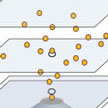 While there is a great deal of knowledge on optical manipulation of metallic nanoparticles in liquids, aerosol trapping of metallic nanoparticles is essentially unexplored. In general, very little is known about optical manipulation of any type of particle in air, where the physics appear to be rather different than in water. The just demonstrated ability to manipulate and study individual metallic or semiconductor nanostructures in air or vacuum opens up many exciting opportunities.
While there is a great deal of knowledge on optical manipulation of metallic nanoparticles in liquids, aerosol trapping of metallic nanoparticles is essentially unexplored. In general, very little is known about optical manipulation of any type of particle in air, where the physics appear to be rather different than in water. The just demonstrated ability to manipulate and study individual metallic or semiconductor nanostructures in air or vacuum opens up many exciting opportunities.
Jun 30th, 2015
 Putting some of the rising amounts of carbon dioxide in the atmosphere to good use again, researchers are looking for ways to convert atmospheric CO2 emissions into industrially relevant, valuable chemicals and fuels; ideally powered by clean, renewable energy sources to make the whole process carbon-negative or at least carbon-neutral, i.e. by using at least - if not more - CO2 than is created in the process. New work demonstrates that current, state-of-the-art renewable energy sources can efficiently power large-scale CO2 conversion systems.
Putting some of the rising amounts of carbon dioxide in the atmosphere to good use again, researchers are looking for ways to convert atmospheric CO2 emissions into industrially relevant, valuable chemicals and fuels; ideally powered by clean, renewable energy sources to make the whole process carbon-negative or at least carbon-neutral, i.e. by using at least - if not more - CO2 than is created in the process. New work demonstrates that current, state-of-the-art renewable energy sources can efficiently power large-scale CO2 conversion systems.
 Subscribe to our Nanotechnology Spotlight feed
Subscribe to our Nanotechnology Spotlight feed





